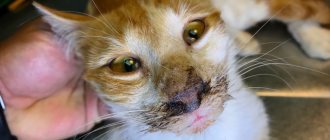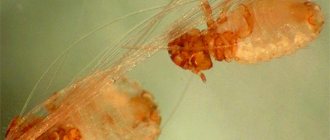Sarcoma (cancer) in cats is diagnosed, unfortunately, quite often. Animals can get it, just like people. Oncological diseases bring a lot of suffering to pets and their owners, since in most cases they are incurable. Despite the fact that scientists around the world are searching for effective ways to combat cancer, they have not yet been found. The drugs prescribed for treatment have a rather negative effect on the body as a whole, poisoning not only malignant tumors, but also vital organs.
If we talk about cancer in general, it is worth noting that there are several varieties. One of the most aggressive is sarcoma. Let's talk about it in this article.
Sarcoma (cancer) – what is it?
Sarcoma (cancer) in cats is an insidious disease. Characterized by the formation of malignant tumors. They consist mainly of connective tissue.
The peculiarity of sarcoma is aggressiveness. With this form, metastases affect neighboring organs in a short period of time. Unfortunately, it is almost impossible to determine the development of the disease in the early stages, since it occurs without visible symptoms.
Soft tissue sarcoma in cats and other types of disease most often lead to death. The main reason for such serious consequences is late diagnosis. As a rule, surgical intervention no longer brings positive results.
Currently, many types of sarcoma are known. They are studied by scientists. In their opinion, the most dangerous are the following:
- fibrosarcoma;
- liposarcoma;
- myxosarcoma.
Modified cells originate in synovial tissue. Due to their rapid growth, the connective tissue is damaged in the shortest possible time. Malignant tumors can affect both tissue and bones of the animal. As a rule, they arise suddenly, localizing in any place without exception.
Why is it developing?
The exact reasons that contribute to the appearance of osteosarcoma and other types of this pathology in cats have not been identified to this day. However, veterinarians agree that the following factors can contribute to the development of this disease:
The disease can develop in a furry cat after a viral infection.
- irradiation;
- infectious and viral pathologies;
- influence of carcinogens;
- frequent mechanical damage;
- genetic predisposition;
- hormonal imbalance;
- deterioration of the immune system.
Classification
Sarcoma in cats is divided into two groups according to location, affecting either soft tissue or hard tissue.
This disease can also be classified according to other parameters. Depending on them, the following types are distinguished:
- Post-injection – a tumor forms in the withers area.
- Rhabdomyosarcoma - affects striated muscle tissue.
- Liposarcoma is a cancer of the fat layer that often causes lumps to form on a cat's abdomen.
- Fibrosarcoma is a lesion of fibrous tissue.
- Osteosarcoma is a malignant process that occurs in the bones.
In veterinary practice, the latter type is found in 80% of cases, so it is considered the most common. As metastases grow, any organs and lymph nodes can be affected.
Stages
Like any cancer, sarcoma in cats has four stages of development. They directly influence the choice of treatment and prognosis:
- First stage. The disease occurs without symptoms. It is already possible to palpate the formations, but they are quite small in size - up to 5 cm. The tumors have clear boundaries. Metastases have not yet formed. When the disease is diagnosed at this stage, most animals have a good chance of recovery. Veterinarians believe that the tumor will respond well to treatment.
- Second stage. Tumors (bumps) on a cat’s stomach or anywhere else reach sizes of more than five centimeters. They lose clarity of boundaries. There is a tendency to rapidly increase, but metastases have not yet formed.
- Third stage. It differs from the first two in that adjacent lymph nodes are affected by metastases.
- The fourth stage is the last and most dangerous. With it, metastases have already spread to all organs. Therapy is selected in such a way as to simply alleviate the cat’s condition. The prognosis is unfavorable. If the disease is diagnosed at this stage, it is recommended to euthanize the animal, since the chances of recovery are zero.
Clinical manifestations
It is useful for all owners to know how sarcoma manifests itself in cats. This will help detect the disease at an early stage. The main thing, even at the slightest suspicion, is to immediately contact a veterinary clinic for an examination.
So, let's look at the signs of sarcoma:
- Problems with movement, often lameness.
- Decreased activity.
- The appearance of tumors, after a certain time they increase.
- Fracture of limbs.
- Decreased appetite or complete refusal to eat, resulting in anorexia.
- Severe painful spasms, due to which the animal’s behavior radically changes. It is imperative to take painkillers, as the pet may die from pain shock.
Post-vaccination complications
Post-vaccination sarcoma in cats is a type of cancer in which a malignant tumor forms in the places where vaccinations were given. Localization area: withers. Why is this happening? Doctors still cannot give a clear answer to this question. There is a version that modified cells begin to grow due to inflammation of the injection site. It manifests itself in the formation of a rather large lump. It will have an irregular shape. The tumor grows into neighboring tissues. It will feel quite hard to the touch and may expand to large sizes. This type of sarcoma affects neighboring tissues in just a few weeks. The animal suffers greatly during this time and quickly dies.
How dangerous is the pathology?
The most aggressive form of the disease is the one that affects bone tissue.
The greatest danger for cats is osteosarcoma, since it quickly metastasizes and affects the lymph nodes and internal organs. This course of the disease does not always allow animal owners to contact a medical facility in time, so cats often die. Sarcoma of the lower jaw in a cat, as well as other tissues, is dangerous because it can occur after routine vaccination. In this case, the disease is called post-injection. Why this happens, scientists have not determined to this day. However, it is generally accepted that this is an individual response of the cat’s body to the injection or subsequent inflammation in the area where the injection was given. The lifespan of pets diagnosed with post-injection sarcoma is about 3 years.
Diagnostics
Only the owner will be able to notice the first symptoms and changes in the pet’s behavior. But diagnosis and treatment should be made by a qualified specialist. When you contact the clinic, a blood test is prescribed. The animal is also examined and the formations are palpated. Their nature can be determined after a biopsy. To do this, cells are taken from the tumor for research. You can determine the extent of organ damage by taking an x-ray of the cat.
Based on the results obtained, the doctor prescribes treatment. What therapy will be depends on the stage of the sarcoma.
Treatment
Most cancers are difficult to treat. The fact is that tumors are affected by strong chemicals, which significantly worsen the general condition of the animal. In some cases (with stage four sarcoma), doctors frankly tell the owners that the treatment will not bring the desired effect, so it is recommended to euthanize the animal. With this development, this is the only humane way that will free your pet from suffering.
Sarcoma in cats can also be treated surgically. However, this method is only possible if the formation has not had time to metastasize.
It is worth noting that in the initial stages, properly selected drug therapy and surgical intervention give a positive result.
If a single type formation is detected, it is recommended to remove it. All affected areas are also excised. If the tumor appears on the paw, the limb is amputated.
For post-vaccination sarcoma, not only surgical removal of the tumor is recommended, but also mandatory drug treatment. It is taken before and after surgery, even if x-rays have not shown the presence of metastases.
A doctor may also diagnose an unresectable sarcoma in a cat. In this case, the animal is prescribed a course of chemotherapy.
It is worth noting that surgical intervention will significantly worsen the animal’s quality of life, but will save it. This is the only way to completely defeat cancer in the early stages. As for chemotherapy, everything will depend on the overall health of the pet. Young individuals, although it is difficult, still tolerate such treatment. But cats that are more than 10 years old rarely survive.
Adjuvant chemotherapy protocol
• Doxorubicin - 30 mg/m2 intravenously once every 3 weeks, 3-5 courses.
• Doxorubicin – 30 mg/m2
• Cyclophosphamide - 300 mg/m2 - once every 3 weeks - 3-5 courses.
We begin chemotherapy on the 10th to 14th day after surgery. It should be remembered that doxorubicin is a fairly toxic chemotherapy drug. It causes various anaphylactic reactions, myelosuppression, cardiotoxicity in dogs at cumulative doses greater than 180 mg/m2, and nephrotoxicity in cats. All this must be taken into account when conducting a course of chemotherapy. As an additional drug treatment after surgery, metronomic chemotherapy can be used, which is aimed at slowing angiogenesis in the tumor and suppressing regulatory T cells that are necessary for tumor growth. In this protocol, chemotherapy drugs are given in reduced doses on a daily basis for an extended period of time. We use a combination of piroxicam at a dose of 0.3 mg/kg and cyclophosphamide at a dose of 15 mg/m2 daily. It is still premature to draw conclusions about the effectiveness, however, there are positive reviews in the specialized foreign literature.
In the complex treatment of soft tissue sarcomas, rhabdomyosarcoma should be especially emphasized. This tumor is one of the most aggressive among soft tissue neoplasms. However, it responds better to radiation and chemotherapy than other sarcomas. In animals, it is most often localized on the limbs, but can also appear in other parts of the body (breast, lower jaw). For the treatment of rhabdomyosarcoma, we always use adjuvant radiation therapy, regardless of the grade of the tumor and the condition of the resection margins. Rhabdomyosarcoma actively metastasizes, so adjuvant chemotherapy should be part of complex treatment.
Preventive measures
There are no specific preventive measures. The only thing that can be recommended to owners is to limit exposure to carcinogenic substances as much as possible. Also, do not forget about strengthening your immune system. Currently, stores sell a variety of vitamins and complex supplements that will help your pet’s diet become complete. You should not refuse vaccination, because injections can be given intramuscularly.
It is important to understand that sarcoma cannot be treated at home. Moreover, there are no effective folk methods to combat it. The owner will only lose precious time, but will not save the life of his pet.
What are the causes of fibrosarcoma in cats?
Tumors often develop as a result of mutation, that is, a random change in genetic information. Fibrosarcoma can occur at any time and does not necessarily have a specific cause. However, the development of these tumors has often been observed at sites of vaccination (for example, after vaccination against rabies or against feline leukemia). These vaccine-associated fibrosarcomas are often more aggressive and pose a significantly higher risk of recurrence. Less commonly, infection with feline sarcoma virus (FeSV) can lead to the development of fibrosarcoma. This tumor virus may develop from feline leukemia virus (FeLV).











